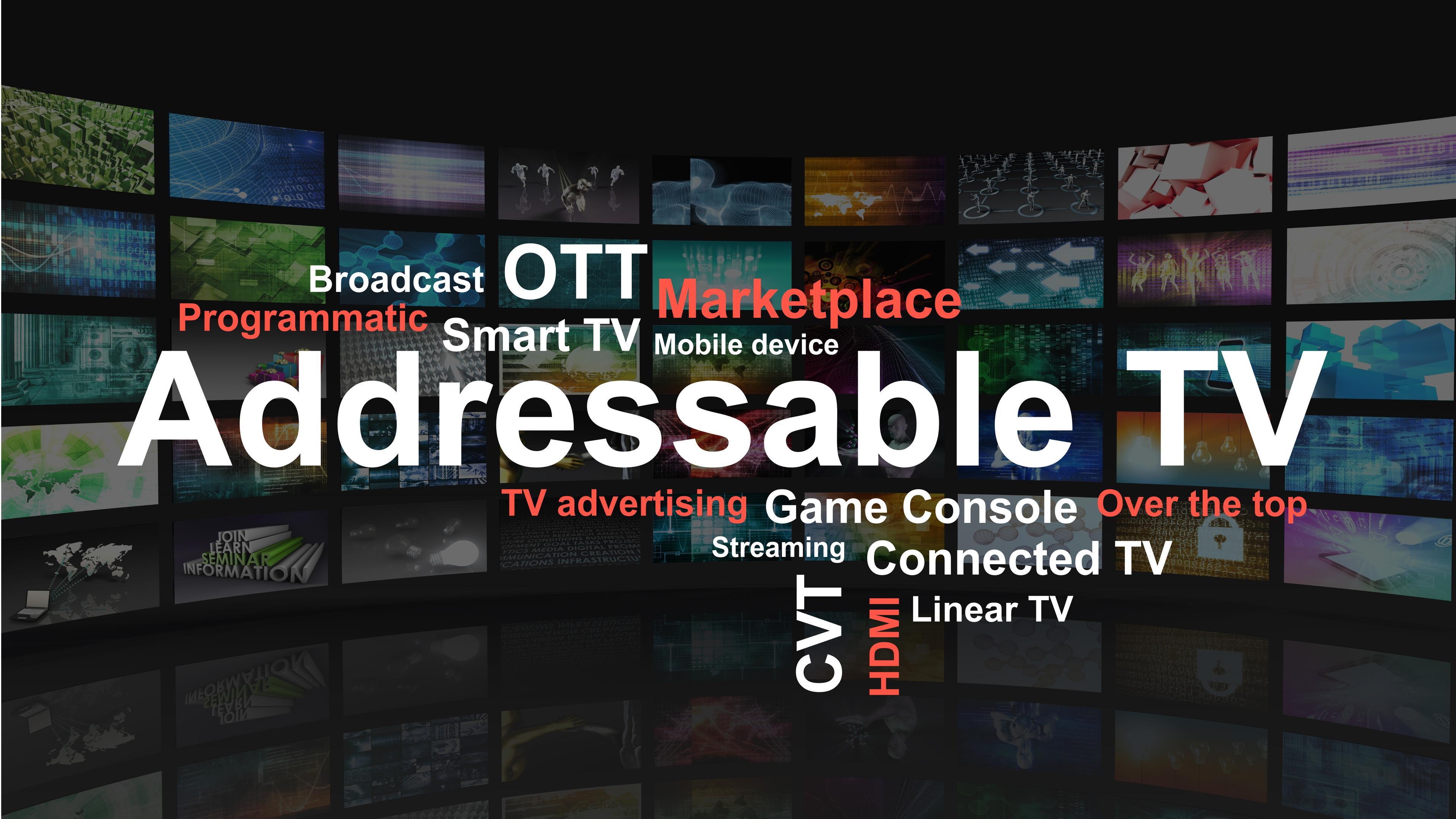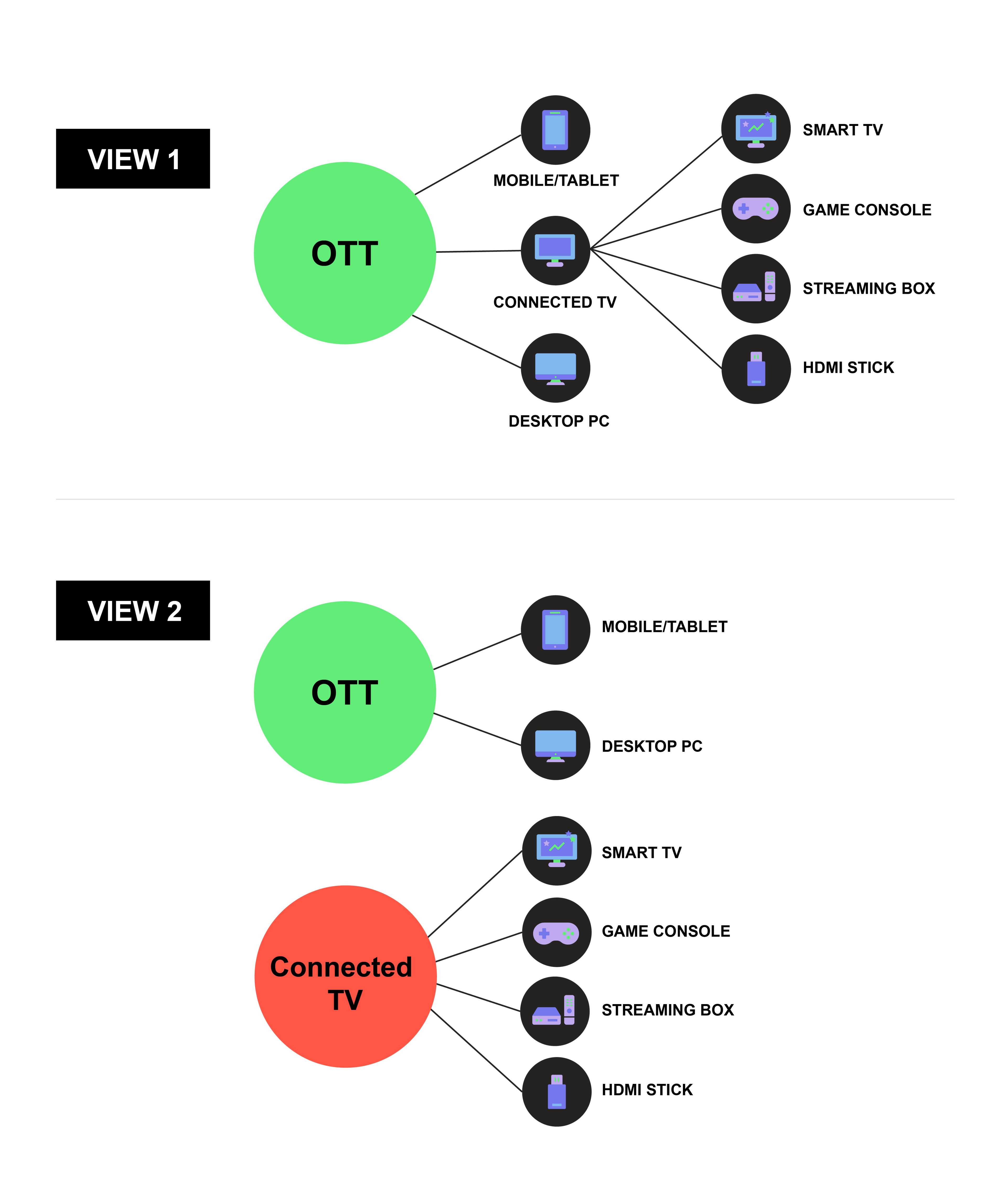Decoding the addressable TV industry's definitions

With the addressable TV advertising marketplace evolving rapidly, it is important to establish and stick to a common set of definitions that we use to communicate both externally and internally.
Many of the definitions vary by market and as such we need to clarify our understanding of these definitions prior to client conversations so we eliminate any confusion. These definitions may be subject to change as the industry evolves.
Addressable TV advertising is the ability to show different ads to different households while they are watching the same content. With the help of addressable advertising, advertisers can move beyond large-scale traditional TV ad buys, to focus on relevance, impact and building incremental reach.
Finecast definitions
Finecast addressable advertising covers CTV, OTT, Linear TV advertising
Connected TV (CTV)
Connected TV is a TV connected to the internet either directly or indirectly through:
- Smart TVs
- External streaming devices such as Roku, Apple TV, Amazon Fire TV Sticks
- Internet-enabled gaming consoles such as Xbox and PlayStation
- Internet-enabled Blu-ray/DVD players
Over the top (OTT)
Over the top (OTT) media encompasses all streaming TV and video content (i.e., VOD, Linear TV, Live Streaming) distributed directly to viewers over the internet bypassing traditional broadcast TV technology. OTT covers all devices and environments including mobile, tablet, desktop and apps, and is not exclusive to CTV.
Linear TV
Linear TV refers to traditional television viewing. In order to watch a show, the viewer must tune in to a specific channel at an appointed time. Viewers access linear TV either free of charge (typically through over-the-air broadcasts) or via subscription to cable, satellite, or IPTV services. Linear TV ads are replaced through Dynamic Ad Insertion (DAI).
This enables relevant targeting based on geo-location, income, gender life-stage, demography, behaviour and other attributes.
CTV Advertising
Advertising that is delivered to a connected TV set (as per the definition above) over an internet connection. It is important to note that connected TV advertising is quite a broad and varied category, covering a spectrum of content providers, ranging from premium quality, professionally produced ‘for TV’ content (typically from broadcaster services) to short-form user-generated content from video sharing platforms (i.e., YouTube).

OTT vs CTV
Here is a useful note on the history behind the term ‘OTT’ from IAB Tech Lab US: The term “OTT” originated in the broadcast world. Content that was originally distributed for view on TVs using broadcast, cable, or satellite channels began to be served online, or “over the top”. It was used to refer to content being distributed via the internet and viewed on desktop PCs and mobile devices (which were the primary means to consume OTT video at that time). However, when people lacking experience in broadcast, and only accustomed to streaming to mobile and desktop, began to use the term OTT, they applied the term to devices other than mobile/desktop – causing a lot of the current confusion.
Programmatic TV advertising
An automated and data-driven approach to buying and delivering ads against TV/video content. ‘Programmatic’ should only refer to how ads are bought and delivered, it should not indicate the environment in which the ads are delivered (e.g., desktop, mobile devices, connected TVs, set-top boxes) or the level of targeting supported (i.e., addressable vs. run of site/network). However, there is often confusion around the term, so it is recommended to clarify the meaning upfront in any discussion or avoid the term altogether in the context of TV advertising.
Advanced TV advertising
A catch-all term for emerging forms of TV advertising that evolved beyond traditional, linear television, including addressable TV, programmatic TV, data driven linear TV, connected TV and OTT.
How do these terms relate to each other?

Connected TV
Over the top (OTT)
Addressable TV advertising
Programmatic TV advertising
The terms above cover three different dimensions of TV advertising:
- Distribution technology and device – i.e., connected TV and OTT
- Targeting capability – i.e., addressable TV advertising
- Approach to buying and delivering ads – i.e., programmatic TV advertising

